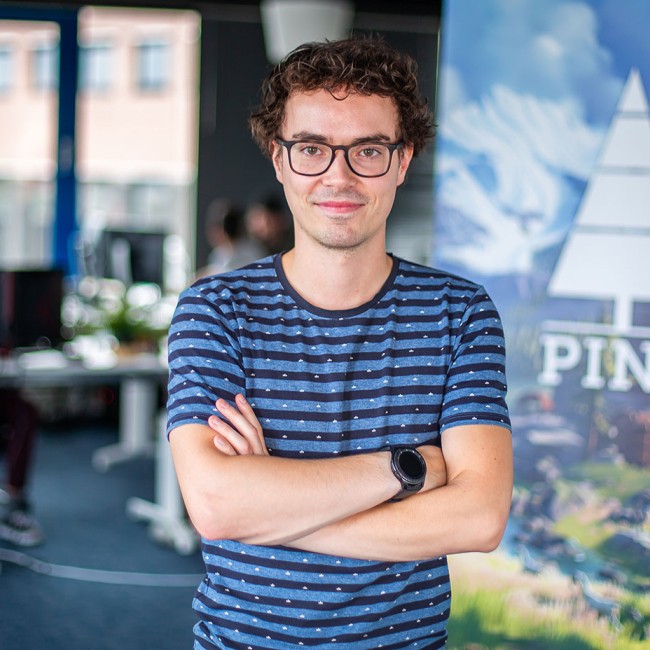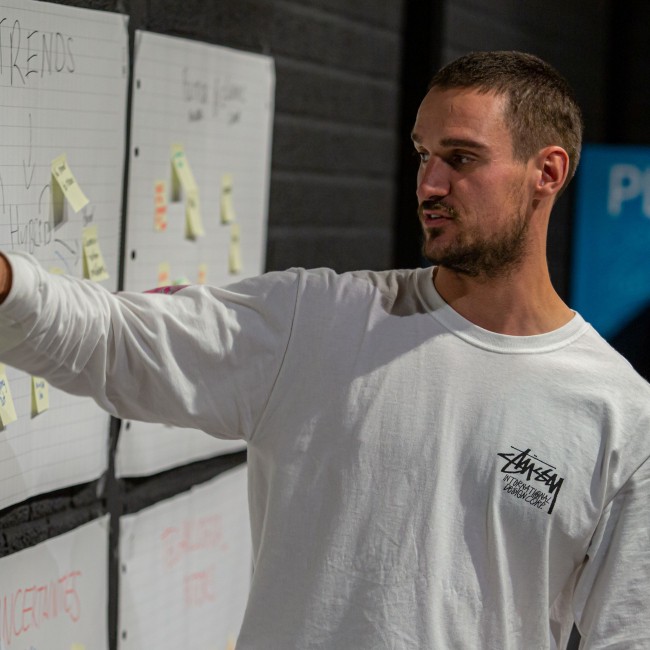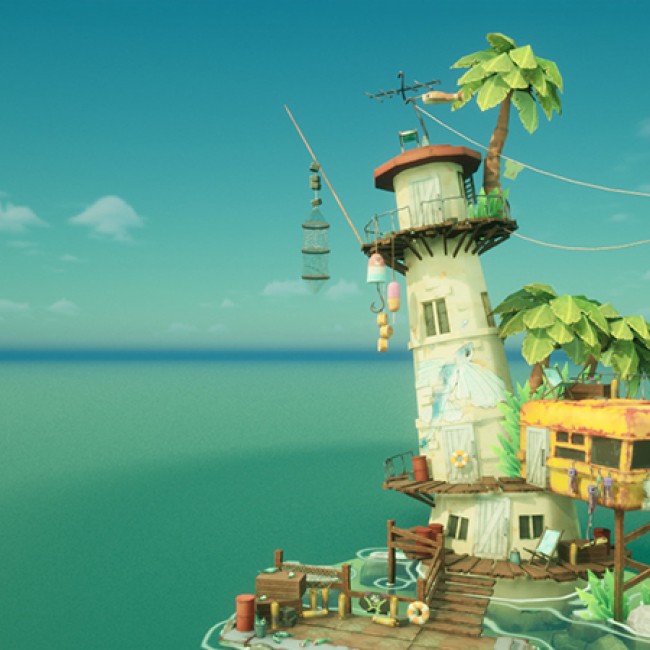Come and meet us
Walking around on campus is the best way to truly experience BUas. Sign up for one of the upcoming events or activities.
A visual world
In this video we showcase our best work in the world of visual effects and pre-production. Sit back, relax, and enjoy our showreel as we take you on a journey through our exciting and immersive visual world.
Courses per year
During this 4-year bachelor’s programme, you will have the opportunity to work on real-world projects, collaborate with international industry professionals, and build a portfolio of work to showcase your film and visual effects skills.
- Year 1
The first year consists of four blocks. In the first three blocks, you will attend lectures and seminars and work on clearly defined projects. This will allow you to develop basic skills and expand your knowledge.
In the fourth block, you will also work in multidisciplinary teams. This means working in a small team of students from different study tracks to develop a game – everyone in their own role. This way, you can practise your skills as well as working in a development team.
The skills you will develop:
- Art theory
- Drawing skills
- Modelling
- Texturing
- Lighting/rendering
- Animation
- Year 2
The second year also consists of four blocks. During the first two blocks, you will continue working on your skills in your chosen role. You will then spend a further two blocks operating in multidisciplinary teams and attending lectures and seminars. In the second year, you can also spend a semester (two blocks) on exchange to gain experience abroad.
The skills you will develop:
- VFX/technical art
- Animation
- Environments
- Procedural modelling
- Compositing
- Year 3
In the third year, you will truly specialise in the role you have chosen. You will work in a multidisciplinary or specialist team on a game project that lasts a year. You will also have the opportunity to go on exchange in this year. Topics covered include:
- Advanced visual arts
- Workshops
- Year 4
In your graduation year, you can literally go in any direction. In the fourth year, students work on projects at companies all over the world! You will complete two projects this final year. You can choose from the following options:
- Working on your portfolio, individually or in teams. By the way, you will always be assessed individually.
- Working at a company, where you will eventually deliver a project result.
- Developing a business plan or starting your own company, supported by our specialists in entrepreneurship.
- Going on an exchange for a semester, studying at one of our partner universities.
You can also combine two above-mentioned projects into a year-long project. Alternatively, you may gain a year's work experience in a graduation internship.
Student work




Intake assignment and selection criteria
To be admitted to the study programme, you will be asked to make an assignment. When your assignment is assessed as satisfactory, you will receive an invitation for an interview. This assignment, but also previously made work, will be discussed there.
The intake assignment consists of a CV, motivation letter and a digital portfolio containing observational artwork in analogue or digital media. Here you can read more information about the assignment and the criteria that the assignment must meet.
Criteria
The CV, motivation letter, portfolio assignment and the interview are assessed against the criteria:
- Motivation (15%)
- We provide small-scale and intensive education. This means that we expect a 40 hours per week commitment to your study, strong teamwork, engagement in regular (1-on-1) feedback sessions, the ability to study independently, an interest in extra-curricular activities and a proactive attitude.
- Do you fit this profile? Explain why.
- How much time did you spend on the assignment?
- How did you prepare? What learning resources did you use?
- Communication (15%)
- Explain your assignment
- Are you proficient in English?
- Can you answer our questions clearly and concisely?
- Reflection (10%)
- What aspect of the assignment of the game did you like the most?
- What did you learn from making the assignment?
- What would you improve if you had more time?
- Portfolio + assignment - Skills & knowledge (60%)
- Quality of the assignment
- Examples of your best work
- Skills and knowledge you already have (including previous education)
Admission & application
What are the admission requirements?
To meet the educational requirements to this degree programme, you need a havo or vwo diploma with an appropriate profile, or an equivalent of these Dutch diplomas. You can also be admitted with an equivalent of level-4 mbo diploma.
- Check out the complete admission requirements and the possibilities if you do not meet the requirements
- Additional requirements have been set for the 3-year track.
Information about admission requirements
How much does this study programme cost?
In the academic year 2025-2026 the statutory tuition fee for bachelor's programmes is €3,250. In addition, you should take extra costs for software, excursions, etc. into account.
How can I apply?
If you meet the admission requirements, you can apply for this programme. Admission is based on selection, each year 220 students are admitted (divided over the 4 study tracks).
More information about applying

Creativity, an artistic eye and technical excellence
As Lead Lighting Artist for Ghost VFX, I've played a role in the creation of visual effects for series such as Shadow and Bone, Star Trek: Picard and The Mandalorian.
I started the Visual Arts track of CMGT back in 2013, which was aimed exclusively at games. The Film Visual Effects track didn't exist yet. However, the focus was on team-based creativity, developing our artistic eye and achieving technical excellence. Three things that are just as relevant when making movies as they are when making games. It still helped me succeed.
While studying at Breda University of Applied Sciences I was surrounded by a community of students and lecturers that shared the same drive to create. Our focus wasn't simply on earning school credits, it was on creating beautiful worlds and immersive stories. It fostered a strong work ethic that serves me to this day.

What can you do after your studies?
The VFX process involves many specialists, including animators, compositors, and motion capture experts, all working together to bring fantasy and action to life. Each role contributes uniquely to making every scene seamless and captivating. On the following page, we’ll explore these crucial roles in detail.
More information about options after your studies





